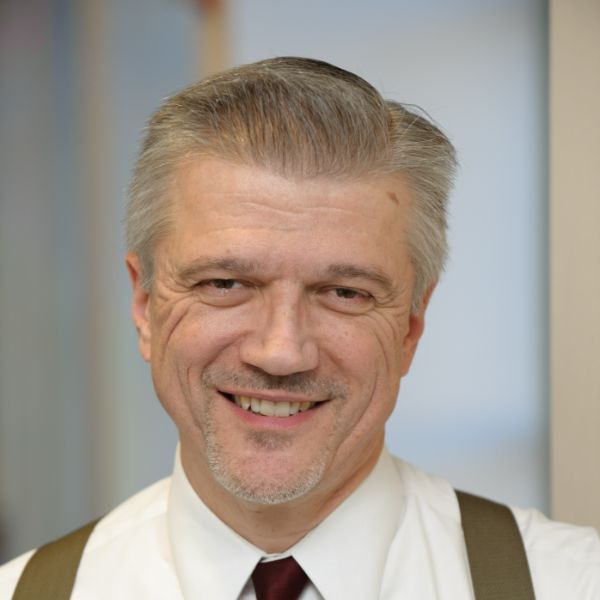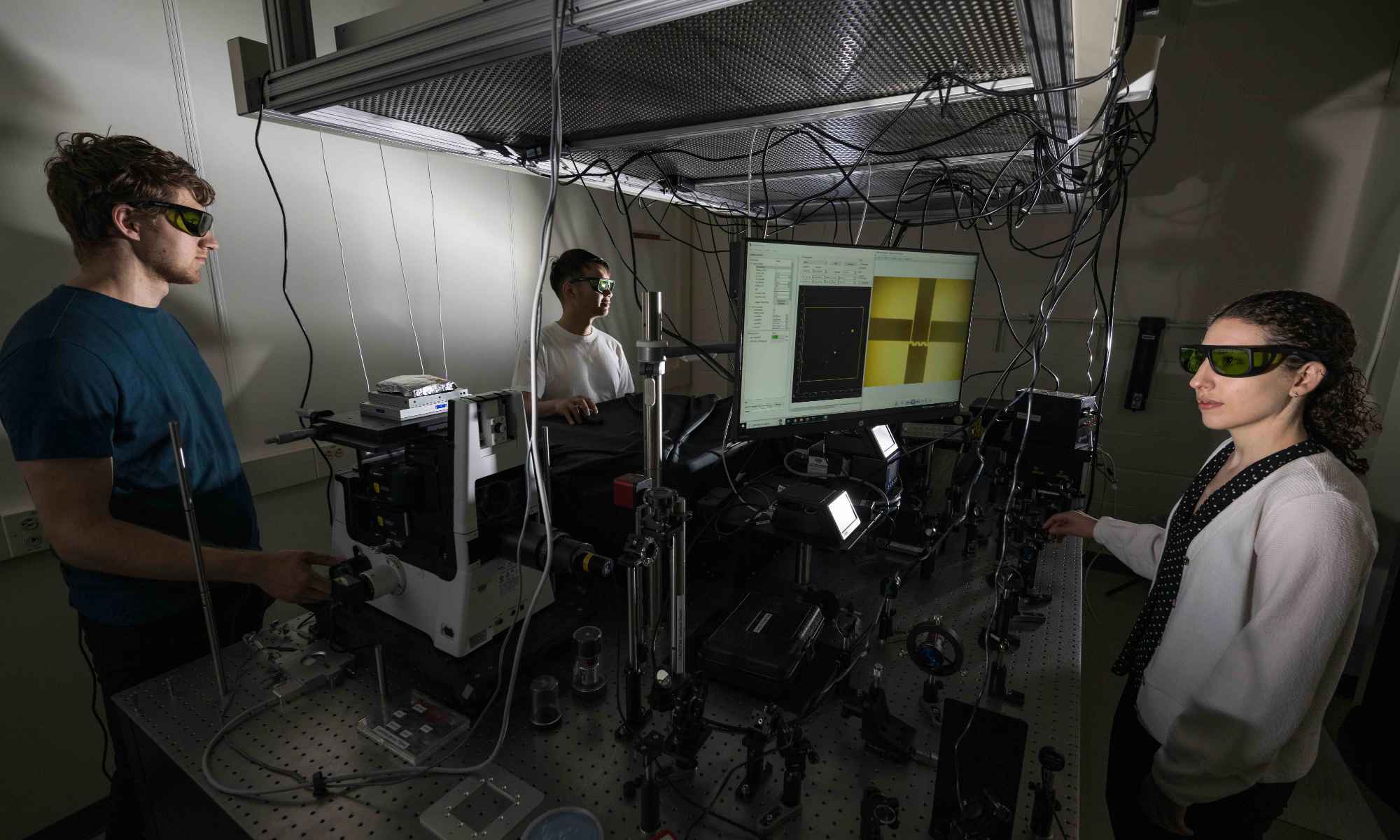U.S. Energy Secretary Ernest Moniz, joined by U.S. Senator Charles Schumer, made his first visit to the University’s Laboratory for Laser Energetics (LLE) on Thursday, October 27. Moniz and Schumer met with researchers and students to tour the facility, discuss the Department of Energy’s proposed budget and initiatives, and highlight the LLE as a unique national resource for research and education in alternative energy science and technology.
“This is an unbelievable, premier, university-based laboratory of substantial scale,” Moniz told the crowd gathered at the LLE. “This laboratory is so integrated into what we do in our national security, in inertial fusion, and in our science activities. It is absolutely remarkable.”
“We are deeply honored to host Secretary Moniz, thanks to the invitation of Senator Schumer,” said Rochester President and CEO Joel Seligman. “The Laboratory for Laser Energetics is one of the University’s highest research priorities, and we take great pride in supporting and maintaining a strong relationship with the Department of Energy that dates over four decades.”
“The LLE has a rich history of innovation, providing a singular environment and supporting a technologically sophisticated scientific community that is internationally recognized,” said Seligman, the G. Robert Witmer, Jr. University Professor. “The work of the laboratory is a vital component to our national and economic security, and puts Rochester at the forefront of efforts to explore nuclear fusion as a source of clean energy for the future. Our partnership with the Department of Energy has been enormously productive, and we look forward to strengthening that relationship.”

Established at the University in 1970, the LLE is an internationally recognized center for the investigation of the interaction of intense radiation with matter. As a nationally funded facility, the LLE has a mission that includes conducting implosion and other experiments to support a Department of Energy program to explore fusion as a future source of energy, to develop new laser and materials technologies, and to conduct research and to develop technology related to high-energy-density phenomena. The LLE is recognized nationally and internationally for its substantial contributions to the DOE’s Inertial Confinement Fusion (ICF) and high energy density physics (HEDP) programs in partnership with three national laboratories (Los Alamos, Sandia, and Livermore). In addition, the LLE provides graduate and undergraduate educational programs to students at Rochester and other universities across the country, and it operates a national program to support qualified researchers throughout the United States to conduct research using its facilities.
“We are so proud—every New Yorker from one end of the state to the other—that the University of Rochester is leading the charge to unlock the next chapter in the story of energy innovation, which is fusion power,” Schumer said. “Rochester’s Omega lab is one of a kind.”
The visit by Moniz and Schumer follows a milestone experiment at the facility. The recent experiments using the facility’s Omega laser show great potential and scale to conditions that could produce record fusion energy yields at the National Ignition Facility at Lawrence Livermore National Laboratory if it were configured for symmetric direct drive.
Omega stands 10 meters tall and is slightly longer than a football field. The system delivers pulses of laser energy onto targets measuring less than a millimeter in diameter in approximately one billionth of a second. LLE is also home to the smaller Omega EP which extends the performance and capabilities of the OMEGA Laser System.
“The Laboratory for Laser Energetics is the world leader in direct drive fusion, as well as laser development and innovation, thanks to the support of the Department of Energy and the U.S. Congress,” said Robert McCrory, who holds the title of University Professor and who has directed the laboratory since 1983. “As a result of steadfast support from representatives like Senator Schumer, OMEGA’s lasers are the largest, most capable, and most cost-effective found at any academic institution in both the U.S. and the world.”
Funding for LLE is administered by the National Nuclear Security Administration (NNSA), an agency within the Department of Energy, thanks to the support of the U.S. Congress. With an annual budget of about $70 million, the laboratory has received more than $1.5 billion in federal funding over the past three decades. Currently, there is $68 million pending in Congress in fiscal year 2017 funding. About 300 scientists, engineers, and others are employed by the facility each year. The DOE designated LLE as the National Laser User’s Facility (NLUF). As a result, the LLE also hosts more than 400 scientists from all over the world to carry out fundamental research, training and education.
“It is clear that the University of Rochester and the laser lab are America’s best bet when it comes to developing the technology and research that will bring our country forward,” Schumer said.
Moniz has led the U.S. Energy Department since 2013, serving as President Barack Obama’s chief advisor on energy strategy, innovation, and technology. Prior to his appointment, he was the Cecil and Ida Green Professor of Physics and Engineering Systems at the Massachusetts Institute of Technology (MIT), where he was a faculty member since 1973. At MIT, he headed the Department of Physics and the Bates Linear Accelerator Center. He also served as the founding director of the MIT Energy Initiative and as director of the MIT Laboratory for Energy and the Environment.




